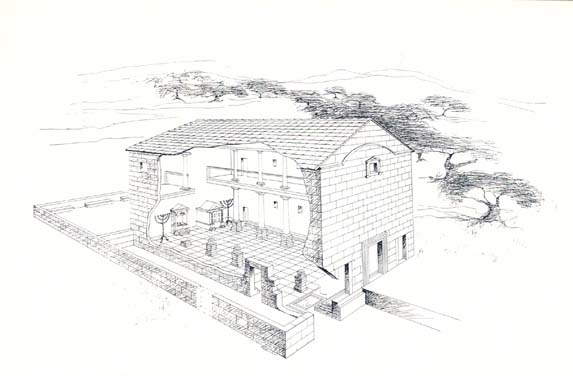Image Details

Lawrence Marcuson
Ruined by an earthquake or some other calamity in the seventh century, the synagogue was totally rebuilt—and renovated. The entrances in the southern wall were blocked and, following the fashion of the times, three new entrances (see plan) were built into a new northern wall instead. In synagogues built in the sixth and seventh centuries in this part of the country, worshippers entered from the north Thus, they would already be facing Jerusalem and would not have to turn around. Archaeologists have discovered parts of two of these entrances; originally, wooden steps descended from their thresholds to the floor of the prayer hall.
Against the back, southern wall of the prayer hall, on the right, stands the bamah with its ark for the Torah. On the left another roofed platform holds the unrolled Torah scroll so that it can be read to the congregation. Flanking these two structures are two large menorot, or ritual candelabra.
In the renovated synagogue, parts of the portico and courtyard of the earlier building were transformed into classrooms for children and adults.
